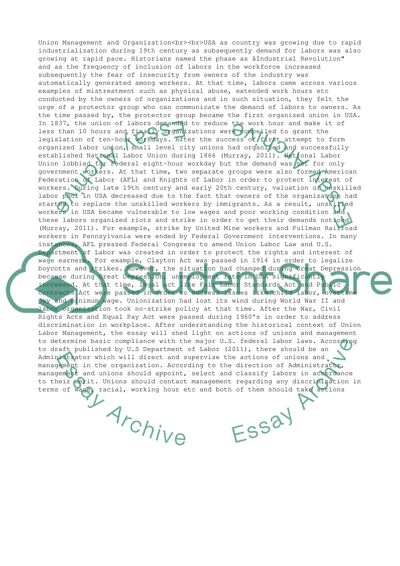Cite this document
(“Union Management and Organization Essay Example | Topics and Well Written Essays - 1250 words”, n.d.)
Retrieved from https://studentshare.org/business/1482065-union-management-and-organization
Retrieved from https://studentshare.org/business/1482065-union-management-and-organization
(Union Management and Organization Essay Example | Topics and Well Written Essays - 1250 Words)
https://studentshare.org/business/1482065-union-management-and-organization.
https://studentshare.org/business/1482065-union-management-and-organization.
“Union Management and Organization Essay Example | Topics and Well Written Essays - 1250 Words”, n.d. https://studentshare.org/business/1482065-union-management-and-organization.


